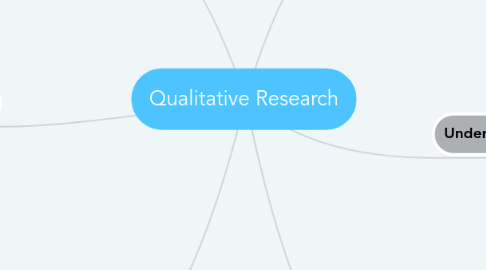Qualitative Research
by Heather Hahn

1. Inductive
1.1. Researchers gather information to form theories rather than trying to prove them. Observations of community/school partnerships drive the narrative.
1.2. This study is attempting to prove benefits for schools and community organizations by forming partnerships.
1.3. There are suggestions about how schools leaders can make these changes by engaging fully with community partners, finding mutual interests, and maintaining an open door policy at schools.
2. Descriptive
2.1. The study tells the story through detailed descriptions rather than through numbers. Interviews, pictures, observations, and videos may be used to show what researchers uncovered.
2.2. The study looks at all different types of community partnerships including universities, social services, businesses, nonprofit organizations, and local municipalities.
2.3. In the discussion of how participants were selected, the authors describe communication through phone, email, and mail as well as emailing a packet to describe how the participants were chosen.
3. Challenging to Assess
3.1. Qualitative studies are nearly impossible to recreate and their reliability and validity must be measured by trustworthiness and authenticity.
3.2. Recognizing the need to prove trustworthiness and authenticity, there were multiple researchers used, triangulation through interviews with community members, and direct quotations used from interviews.
3.3. Researchers acknowledged limitations in the study because one school was a charter school and one was missing data. More research is needed in order to further explore some of the themes that were uncovered in the study.
4. References
4.1. Merriam, S. (2002). Qualitative Research in Practice. San Francisco, CA: Jossey-Bass.
4.2. Gross, J. M., Haines, S. J., Hill, C., Francis, G. L., Banning, M. B., & Turnbull, A. P. (2015). Strong school-community partnerships in inclusive schools are "part of the fabric of the school...we count on them. School Community Journal, 25(2), 1-34. Retrieved June 16, 2019, from www.schoolcommunitynetwork.org/SCJ.aspx.
4.3. Bryman, A. (2004). Social Research Methods. Oxford: Oxford University Press.
5. Importance of Researcher
5.1. The researcher creates questions, interpretes data, incorporates his/her own world view, adapts during the process, and identifies any personal bias so to incorporate it instead of trying to ignore it.
5.2. The team visited each site two additional times (3-4 days per visit) to collect data. Data included interviews, focus groups, observations, checklists.
5.3. Relationships were used to start conversations on broad topics which lead to follow-up questions to obtain more descriptive information.
6. Understanding Meaning
6.1. The researcher's goal is to understand how the focus group interprets its reality and develops its point of view on the subject.
6.2. The goal of the study was to collect data on fostering strong school/community releationships. Schools with previous success with mutually beneficial partnerships were studied.
6.3. School factors that appeared to contribute to success with the promotion of school-community partnerships included strong school leadership, inviting culture, teacher commitment, and collaboration.
7. Procedural
7.1. The researcher uses a systematic approach to conducting a qualitative study
7.2. This study was only one component of a larger study focusing on the transformation of schools.
7.3. Specific procedures were in place to select participants. The process involved narrowing down the focus group from 37 to 6 that were used for collecting data from stakeholders.
7.4. Inquiry included classroom practices and the perspectives of teachers, administrators, students, families, and community partners.


